Xiaomi Announces Redmi Note 10 Series: Pro Hands-On at $279
by Andrei Frumusanu on March 4, 2021 7:50 AM EST- Posted in
- Mobile
- Smartphones
- Xiaomi
- Redmi Note 10 Pro
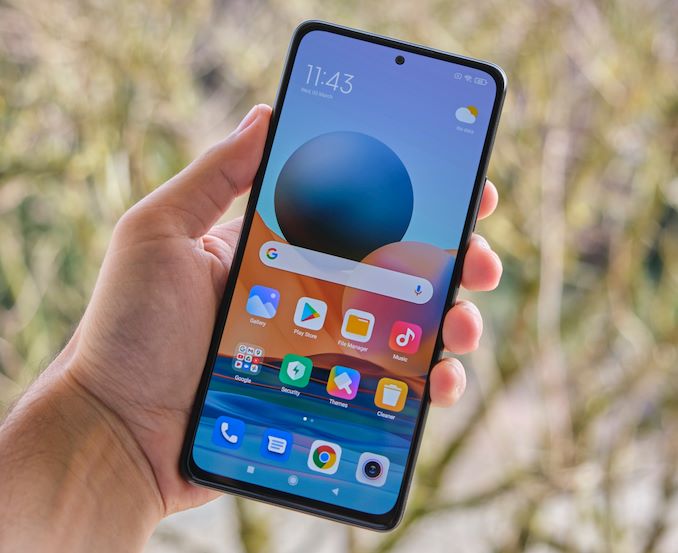
Today Xiaomi is updating one of its most popular and successful phone models with a slew of new Redmi Note 10 variants. Alongside the Note 10, Note 10S and the Note 10 5G, we’ve had the Redmi Note 10 Pro for a few days to get our first impressions of the low-cost device. The device’s predecessor, the Redmi Note 9 Pro, was amongst our top buyer’s recommendations at this price point in 2020, and the newer Note 10 Pro has a few tricks up its sleeve to make it an ever more interesting device in this price range.
| Xiaomi Redmi Note 10 Pro Comparison | ||
| Note 9 Pro | Note 10 Pro | |
| SoC | Snapdragon 720 2x A76 @ 2.3GHz 6x A55 @ 1.8GHz Adreno 618 |
Snapdragon 732G 2x A76 @ 2.3GHz 6x A55 @ 1.8GHz Adreno 618 |
| Display | 6.67-inch FHD+ 2400 x 1080 (20:9) |
6.67-inch FHD+ 2400 x 1080 (20:9) |
| IPS LCD 60Hz |
AMOLED 120Hz |
|
| Dimensions | 165.8 x 76.7 x 8.8 mm 209 grams |
164.0 x 76.5 x 8.1 mm 193 grams |
| RAM | 6GB LPDDR4X | 6 / 8GB LPDDR4X |
| NAND Storage |
64 / 128GB UFS 2.1 + microSD |
64 / 128GB UFS 2.2 + microSD |
| Battery | 5020mAh (19.32Wh) typ. | |
| 18W Fast Charging | 33W Fast Charging | |
| Front Camera | 16MP 1.0µm f/2.5 |
16MP f/2.45 |
| Primary Rear Camera | 64MP 0.8µm 1/1.72" Samsung GW1 (16MP 1.6µm 2x2 binning) f/1.89 |
108MP 0.7µm 1/1.52" Samsung HM2 (12MP 2.1µm 3x3 binning) f/1.9 25mm eq. |
| Secondary Rear Camera |
8MP 1.12µm Ultra-Wide-Angle f/2.2 119° FoV / 13mm eq. |
|
| Tertiary Rear Camera |
5MP 1.12µm Macro Camera f/2.4 |
|
| Extra Camera |
2MP Depth Sensor | |
| 4G / 5G Modem |
Integrated 4G | |
| SIM Size | NanoSIM + NanoSIM + microSD (Triple slot, all separate) |
|
| Wireless | 802.11a/b/g/n/ac BT 5.0 LE, NFC, GPS/Glonass/Galileo/BDS |
|
| Connectivity | USB Type-C + 3.5mm jack | |
| Special Features | IP53 Rating | |
| Fingerprint sensor (Capacitive power button) IR Blaster |
||
| Launch OS | Android 10 w/ MIUI 11 | Android 11 w/ MIUI 12 |
| Launch Prices | 6+64GB: $269 6+128GB: $299 |
6+64GB: $279 6+128GB: $299 8+128GB: $329 |
In terms of SoC powering the Redmi Note 10 Pro, we find the Snapdragon 732G, which is a binned Snapdragon 730 which was found in last year’s Redmi Note 10 Lite – which in turn was a very similar chip to the Snapdragon 720 in the previous Note 9 Pro. The SoC is characterised by 2x Cortex-A76 cores at 2.3GHz which serve as the performance workhorses of the chip, alongside 6x Cortex-A55 cores at 1.8GHz.
The phone’s CPUs and general usage performance is excellent for a device in this price range, and is a larger departure of the low-end performance of low-cost devices of past years. Relative to the Note 9 Pro, the generational improvements are more minor.
The Adreno 618 GPU isn’t nothing to write home about, however the performance can actually be surprisingly high for this segment, and even outperforms the odd performance of much more expensive devices such as the Pixel 4 XL or Pixel 5.
Xiaomi is equipping the base model of the Note 10 Pro with 6GB of LPDDR4X and 64GB of UFS 2.2 storage, which upgrades to 128GB for a higher storage model, and finally a rather odd 8+128GB combination for the highest configuration. The phone has expandable storage via a dedicated microSD slot whose tray also separately can also house two nanoSIM cards.
Connectivity on the device is rather basic, no 5G or WiFi 6 to be found here, but that’s generally to be expected. It does offer an IR blaster though which is somewhat rare these days.
The biggest feature of the new generation Note 10 Pro is its display. Featuring the same size and resolution as its predecessor at 6.67” and 2400 x 1080, the very big difference this year is the fact that Xiaomi has moved towards an OLED display, replacing the IPS LCD of the previous iteration. I’ve always considered OLED displays a major feature differentiation in these price segments, and it gives the Redmi Note 10 Pro a major advantage against other competitors.
Furthermore, not only is this an excellent quality OLED screen, but it’s even capable of 120Hz refresh rate, making the phone even more attractive as essentially you cannot find this feature combination anywhere near this price point.
The real only nitpick I’d have to make about the display is the hole-punch front camera. It’s still a 16MP unit with f/2.45, so in that regard we don’t seem much change. On my unit however the camera was notably off-centre within the OLED panel hole, and the silver reflective highlight ring around the module further attracts attention to it, which might not be to everybody’s taste.
The phone is on the larger side with a width of 76.5mm width, but at least Xiaomi was able to slightly reduce the weight down to 193g, all while keeping the same 5020mAh battery capacity of the predecessor. In terms of ergonomics, the phone has a curved glass back panel which helps with handling the rather large footprint phone.
The left side of the phone is bare, except for the SIM and microSD slot, while the right side has the power button and volume rocker. The power button is a combo-button and capacitive fingerprint scanner, with a good quality click and good vertical positioning.
The rear camera setup gives me a very 80’s electronics device feeling – I wonder if that’s on purpose or not. Although Xiaomi advertises the phone as a quad-camera device, it really only contains two everyday usable modules, with a 5MP f/2.4 macro camera and a 2MP depth sensor being situated between the main camera module and the ultra-wide module.
The ultra-wide module is seemingly the same as on the Note 9 Pro series, an 8MP 1.12µm unit with f/2.2 optics with a very large 119°FoV / 13mm equivalent.
The main camera is a larger departure from past generations. This is amongst the first phones to feature Samsung’s new HM2 108MP module. Unlike other 108MP modules from Xiaomi or Samsung, this features smaller 0.7µm pixels, being a smaller 1/1.52” sensor. It’s still definitely a large module, and is quite bigger than the 1/1.72” GW1 in the Note 9 Pro. The sensor here does 3x3 pixel binning down to 12MP images with equivalent pixel pitches of 2.1µm, so each pixel should receive 72% more light than the previous generation module, albeit it’s lower resolution at 12MP vs 16MP.
The optics are f/1.9 with a 25mm equivalent focal length. There’s no OIS here – it’s a compromise that had to be made at this price range.
A quick testing of the daylight camera performance shows that the main module is quite adequate, being able to bring out a lot of details in most situations, however the general processing isn’t really up to par with a higher-end device, as we’re seeing not quite great dynamic range and rather flat processing. The ultra-wide in particular suffers a lot in demanding lighting situations, and also generally the HDR requires the camera and subject to be still to avoid ghosting. All in all, it’s still a very functional camera at this price point.
The frame at the top and bottom of the phone has a matte finish to it and allows for a better grip while also avoiding more obvious fingerprint marks.
The phone has stereo speakers which are surprisingly clear and good quality – we’ve seen Xiaomi develop some really great implementations in the last few years. Naturally, there’s also a 3.5mm headphone jack which continues to be a feature only for lower-end devices in recent times.
Also Released Today: Note 10S, Note 10 & Note 10 5G
Alongside the Note 10 Pro, Xiaomi is also announcing three other Redmi Note 10 devices, with the Note 10S, Note 10:
| Xiaomi Redmi Note 10 Series Comparison | ||||
| Note 10 5G | Note 10 | Note 10S | Note 10 Pro | |
| SoC | Dimensity 700 2x A76 @ 2.2GHz 6x A55 @ 2.0GHz Mali G57MP2 |
Snapdragon 678 2x A76 @ 2.0GHz 6x A55 @ 1.7GHz Adreno 612 |
Helio G95 2x A76 @ 2.3GHz 6x A55 @ 1.8GHz Mali G76MP4 |
Snapdragon 732G 2x A76 @ 2.3GHz 6x A55 @ 1.8GHz Adreno 618 |
| Display | 6.5-inch FHD+ 2400 x 1080 (20:9) |
6.43-inch FHD+ 2400 x 1080 (20:9) |
6.67-inch FHD+ 2400 x 1080 (20:9) |
|
| IPS LCD 90Hz |
AMOLED 60Hz |
AMOLED 120Hz |
||
| Dimensions | 161.8 x 75.34 x 8.92 mm 190 grams |
160.0 x 74.5 x 8.29 mm 178.8 grams |
164.0 x 76.5 x 8.1 mm 193 grams |
|
| RAM | 4 / 6GB LPDDR4X | 6 / 8GB LPDDR4X | ||
| NAND Storage |
64 / 128GB UFS 2.2 + microSD |
|||
| Battery | 5000mAh (19.25Wh) typ. |
5020mAh (19.32Wh) typ. | ||
| 18W Fast Charging | 33W Fast Charging | |||
| Front Camera | 8MP | 13MP | 16MP f/2.45 |
|
| Primary Rear Camera | 48MP 0.8µm 1/2" (12MP 1.6µm 2x2) f/1.79 |
64MP 0.8µm 1/1.72" Samsung GW1 (16MP 1.6µm 2x2) f/1.89 |
108MP 0.7µm 1/1.52" Samsung HM2 (12MP 2.1µm 3x3) f/1.9 25mm eq. |
|
| Secondary Rear Camera |
- | 8MP 1.12µm Ultra-Wide-Angle f/2.2 119° FoV / 13mm eq. |
||
| Tertiary Rear Camera |
2MP macro | 5MP 1.12µm Macro Camera f/2.4 |
||
| Extra Camera |
2MP Depth Sensor | |||
| 4G / 5G Modem |
Integrated 5G | Integrated 4G | ||
| SIM Size | NanoSIM + NanoSIM + microSD (Triple slot, all separate) |
|||
| Wireless | 802.11a/b/g/n/ac BT 5.0 LE, NFC, GPS/Glonass/Galileo/BDS |
|||
| Connectivity | USB Type-C + 3.5mm jack | |||
| Special Features | - | Dual Speakers, IP53 Rating | ||
| Fingerprint sensor (Capacitive) | Fingerprint sensor (Capacitive power button) IR Blaster |
|||
| Launch OS | Android 11 w/ MIUI 12 | |||
| Launch Prices | 4+64GB: $199 4+128GB: $229 |
4+64GB: $199 4+128GB: $229 |
6+64GB: $229 6+128GB: $249 8+128GB: $279 |
6+64GB: $279 6+128GB: $299 8+128GB: $329 |
Redmi Note 10 @ $199
The Redmi Note 10 is a smaller sibling to the Note 10 Pro. The differences between the devices is a 6.43” screen, and different camera setup. The display is still a AMOLED display at 1080p, however it doesn’t feature 120Hz refresh rate.
The main camera is a 48MP unit, and the device is powered by a Snapdragon 678 SoC, with the device starting at $199.
Redmi Note 10S @ $229
The Redmi Note 10S is a higher-end Note 10, sharing the same smaller form-factor, but replaces the main camera with a higher-end 64MP camera, and replaces the SoC with a MediaTek Helio G95. The pricing here starts at $229.
Redmi Note 10 5G @ $199
Finally, the Redmi Note 10 5G is a really weird entry in the series. Powered by MediaTek’s Dimensity 700 SoC, this is actually a lower-end processor compared to the other Note 10 devices, however it differentiates itself in that it’s the single model which features 5G connectivity.
The phone is actually lower-end, it features a 90Hz LCD display at 2400 x 1080 resolution, features still the basic 48MP main camera module as on the Note 10, however doesn’t feature the ultra-wide camera module.
Pricing of the Note 10 5G is also coming in at the $199 price range. Essentially, you’re trading in an OLED display and ultra-wide camera module, and better build design with dual speakers in favour of 5G. Generally, I don’t think that’s worth the compromises, so for me this is the least interesting device in the new line-up.
Great Value Devices
Overall, I think Xiaomi did a really great job with this round of Redmi Note 10 devices. While having tested the Note 10 Pro, the Note 10 and Note 10S phones also look extremely interesting and fantastic value for their respective prices, ranging from $199 to $279 in the base configurations. As noted earlier, my thoughts last year were that the Note 9 Pro was amongst the best value devices at this price range, and I think the Note 10 Pro and smaller siblings are even more attractive – offering either superior features and hardware, or undercutting the competition in price. In that regard, I don’t think you can go wrong with the new 2021 line-up.


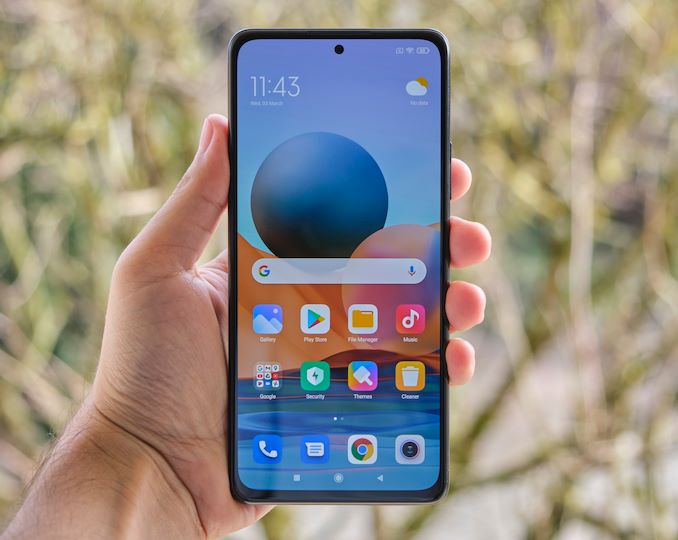
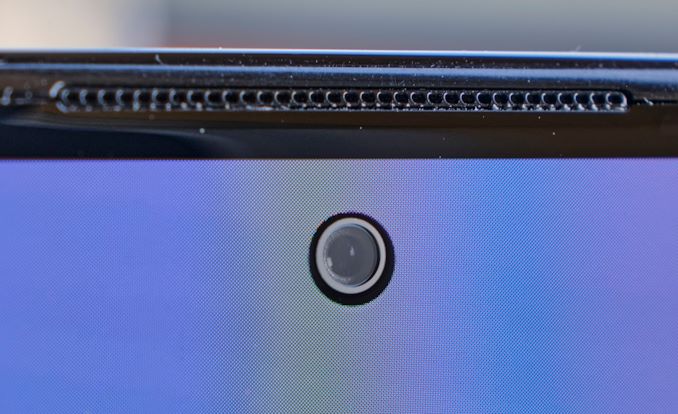
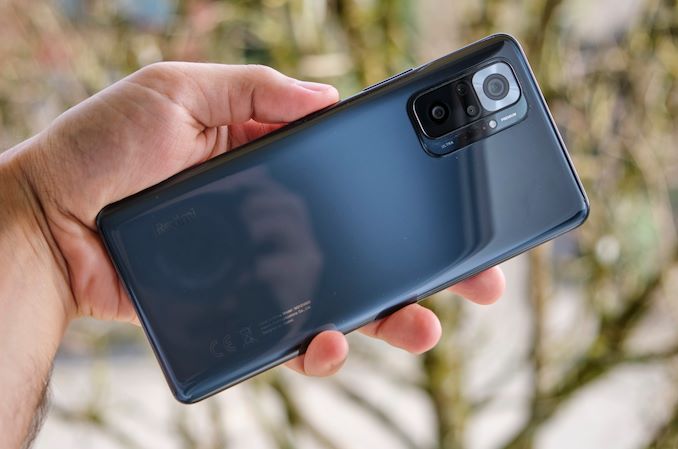
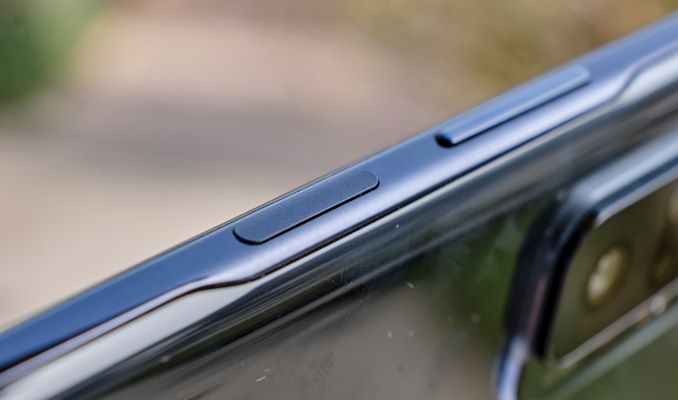






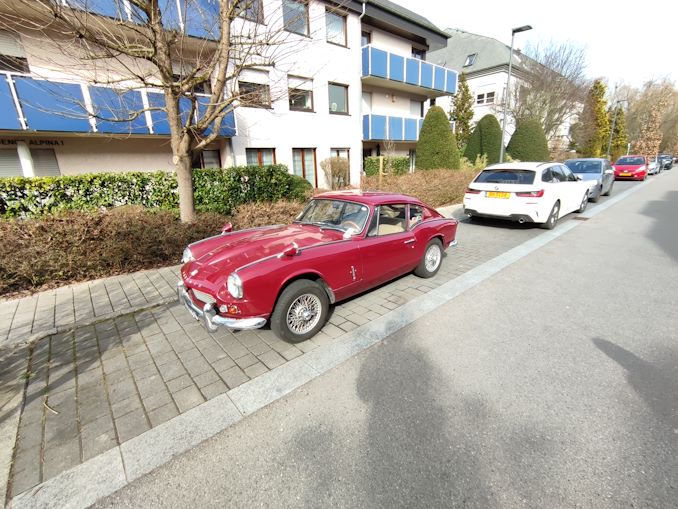






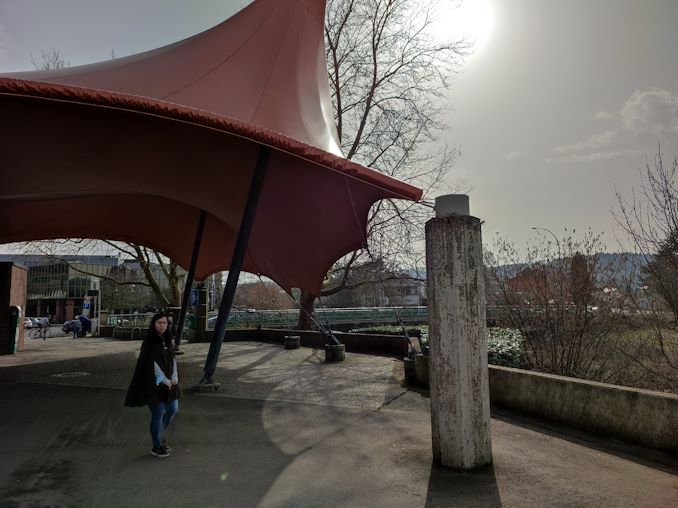








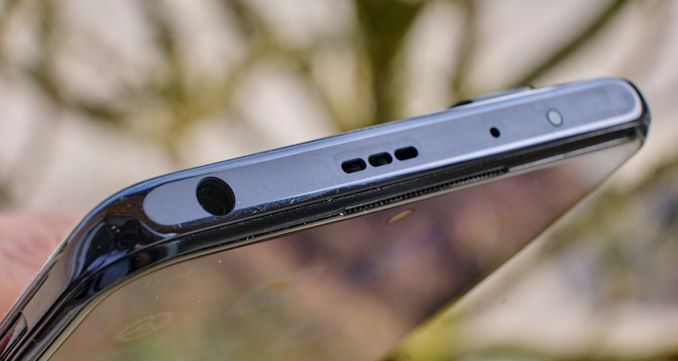











70 Comments
View All Comments
leo_sk - Thursday, March 4, 2021 - link
These are the almost always the best phones for their price. I am a firm believer of not spending more than 300$ at a phone, and searching for devices almost always leads me to these. I wonder how they are able to pack so many features at this price, while also delivering software updates for more than 3 years, and why no other manufacturer is able to replicate this modeldragosmp - Thursday, March 4, 2021 - link
Nice, they look pretty good. I'd be intersted of a deeper dive of the Note 10, as this will likely be the best seller.@Leo, there are other alternatives, they just don't go to the US retail so much. Oppo, Honor, Poco, Vivo to name a few have competitive offerings in the Asian/European market. Xiaomi are better known, probably only second to Huawei as Chinese phone brand recognition. If you're interested in what the bargain bin has to offer, try gearbest.com or any such big Chinese retailers. For me, whatever tthat's worth, it worked pretty well so far.
leo_sk - Friday, March 5, 2021 - link
I am currently in India, and even here xiaomi is best value for money, especially the redmi pro series. Similar specced devices from Vivo, oppo etc (poco is branch off from xiaomi too but are usually higher end budget) are priced ₹5000-6000 higher (70-90$)damianrobertjones - Friday, March 5, 2021 - link
"why no other manufacturer is able to replicate this model"They're not greedy.
Nexing - Wednesday, June 30, 2021 - link
Their fixation on XIX & XX century business practices stops them realizing the income losses they have to bear.Once they get to acknowledge such behavioral evolution, we might as well switch the terms and replace those "ambition", "greediness" and similar qualifiers into something more attuned with what stands below their surface: sustainable long term revenue, get things well done, etc.
Murloc - Friday, March 5, 2021 - link
integrated ads in the operating system and default apps, with lots of data collection. First-time setup is a pain if you want to get rid of some of that.After doing that it's a good phone but still.
Non-tech savvy people are giving all their data and seeing ads all the time, and these ads make money for xiaomi.
Murloc - Friday, March 5, 2021 - link
to finish my message: I am happy with the phone as I was able to deactivate adds in every app, and install alternative apps instead of using many default ones, and I could deactivate permissions for the ad agent, but I think I'm going to switch to something else when I change my phone the next time. It's just too sketchy.frbeckenbauer - Sunday, March 7, 2021 - link
for installing lineageos, these devices are the best choice thoughmarkiz - Monday, March 8, 2021 - link
No ads in EU. Slightly higher prices though.ZolaIII - Monday, March 8, 2021 - link
All true and still even it has a better privacy control, less adds and generally works better without Google integration on the OS lv.